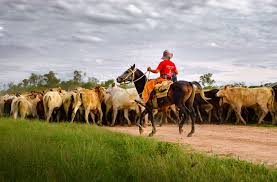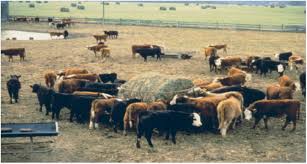To many, statistics may seem indistinguishable from mathematics. In this article, the basic concept of statistics will be introduced, specifically focusing on population and sample. The distinction between population and sample will be highlighted, along with the associated terminologies.
Definition of Population in Agricultural Context
Population is defined as the collection of all individuals or items under consideration in a statistical study (Weiss, 1999). In agriculture, the population represents the entire set of values or individuals of interest.
It may also be defined as the set of entities being studied. For example, when studying the weight of cattle in Nigeria, the population includes all bulls and cows, both those alive and those that are deceased or yet to be born.
Measuring the entire population of cattle would be impossible due to the inclusion of unborn and deceased cattle. Additionally, even if it were possible, it would be highly costly in terms of time and resources. In this case, the population of interest is cattle, and the parameter being studied is their body weight.
Read Also: Cost of Constructing a Pen of 1000 Layers Cage
Sample

Sample refers to the part of the population from which data is collected (Weiss, 1999). Since measuring the entire population is often impractical, a subset, or sample, is selected.
This sample is then used to make inferences about the entire population under study. For instance, in a study involving cattle, a sample is selected, their weights are measured, and an average or mean is calculated.
The mean derived from the sample is called a statistic, which is used to infer characteristics of the population parameter. Due to the potential inaccuracies involved in making inferences from a sample, only an estimate about the population can be drawn.
It is important to note that the sample size is always smaller than the population, which can result in the loss of some information.
Sample and Sampling Methods in Agricultural Research
It is critical to ensure that samples are randomly selected to avoid bias when estimating population parameters. This is typically done using Simple Random Sampling, where each member of the population has an equal chance of being included in the sample. This randomness ensures that the sample is representative of the population.
Discrete and Continuous Variables in Agricultural Data
A variable is any characteristic that varies from one individual or object to another within a population. In agricultural research, multiple variables might be involved, such as the sex of the animal, the number of teats on a cow, or the parity of a sow.
When counting is involved rather than measuring, the result is a discrete random variable. Discrete random variables can only take on a certain number of integer values. Examples of discrete random variables include the number of kids born by a goat or the number of piglets farrowed by a sow.
Continuous random variables, on the other hand, are derived from measurements on a continuous scale. An example is the birth weight of a goat.
Read Also: Economic Importance of Crayfish Farming
Classification of Variables in Agricultural Studies

Variables can be broadly classified into two categories:
1. Qualitative Variables: These variables can be categorized based on a characteristic or attribute. For instance, gender (male or female) is a qualitative variable.
2. Quantitative Variables: These are numerical variables that can be ranked or ordered. For example, the age of animals is a quantitative variable. Quantitative variables are further divided into:
i. Discrete Variables: These assume integer values and represent countable characteristics. Examples include the number of piglets farrowed by a sow or the number of birds in a pen.
ii. Continuous Variables: These variables can assume any value within a specific range and are obtained through measurement. Examples include variables such as weight, height, yield, temperature, and time.
This classification helps in selecting the appropriate statistical tools for agricultural research and ensures accurate conclusions are drawn.
Do you have any questions, suggestions, or contributions? If so, please feel free to use the comment box below to share your thoughts. We also encourage you to kindly share this information with others who might benefit from it. Since we can’t reach everyone at once, we truly appreciate your help in spreading the word. Thank you so much for your support and for sharing!

